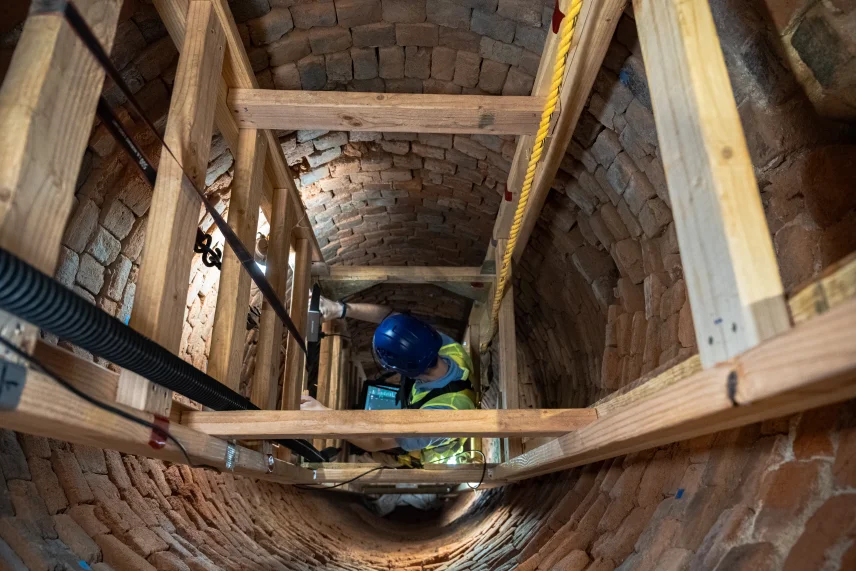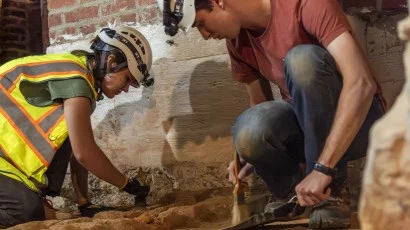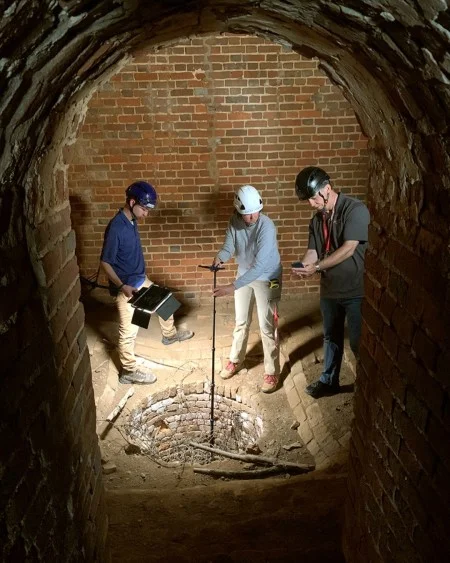In 1785, George Washington had a dry well built in the Mansion cellar. A large cylindrical pit, the 22-foot-deep dry well was intended to maintain a consistent temperature throughout the year to allow for the storage of ice harvested from the Potomac River by enslaved workers.
This dry well, however, ultimately proved unsatisfactory to Washington, who wrote on June 5, 1785: “Opened the Well in my Cellar in which I had laid up a store of Ice, but there was not the smallest particle remaining.”
Using dendrochronology, the science of studying the growth rings of trees, Mount Vernon’s Preservation team was able to date the wooden ring at the top of the dry well to 1785. “This was a really exciting alignment of documentary and forensic evidence,” says Thomas Reinhart, Mount Vernon’s Director of Preservation.
As part of the Mansion Revitalization Project, the dry well underwent necessary masonry repairs to ensure its survival for years to come. Before commencing repairs, Mount Vernon’s Preservation team conducted a condition assessment and documentation of the well.

Preservation Conservator Riley Morris conducts a condition assessment of the well, helping the Preservation team determine the necessary masonry repairs to ensure its survival for years to come. (MVLA)


